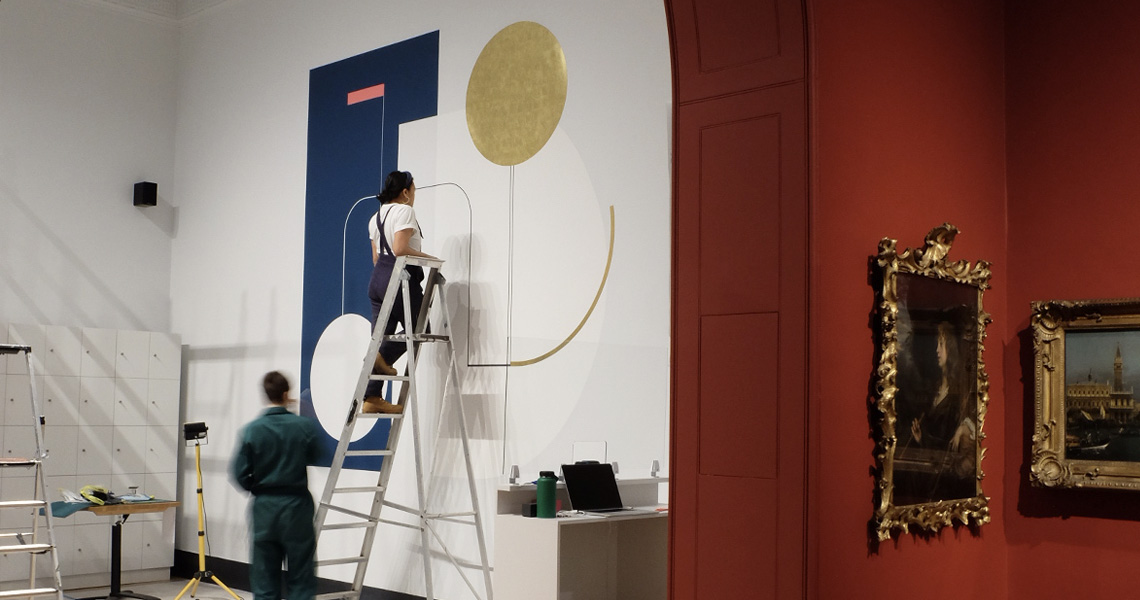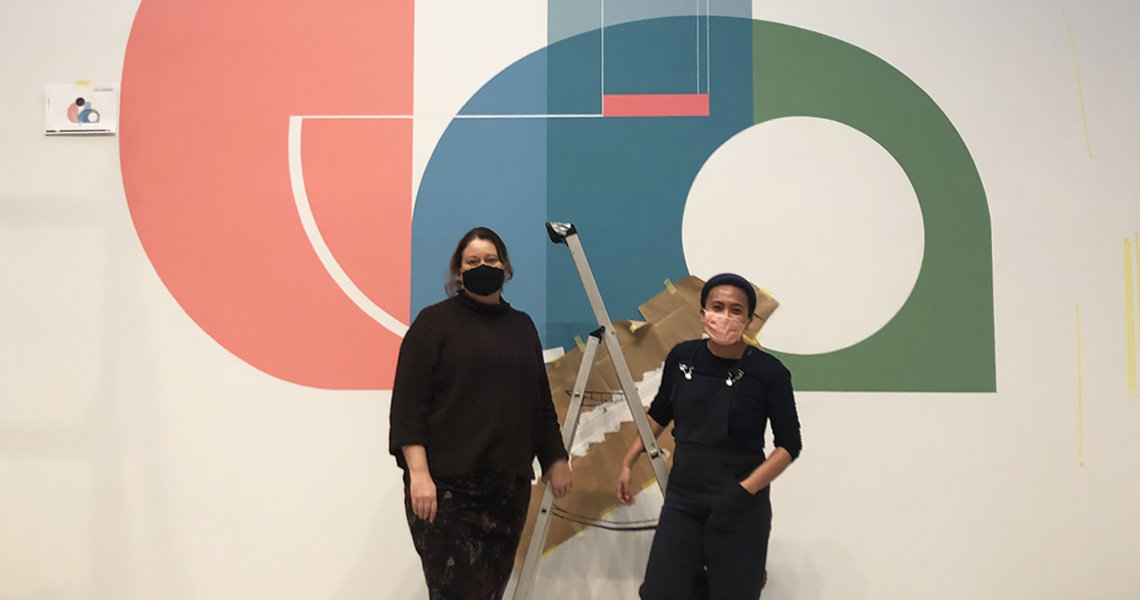Meet Sinta Tantra, the artist who reimagined our Welcome Hall
The Grand Tour, designed by British-Balinese artist Sinta Tantra takes pride of place in our fresh welcome hall. We spoke to Sinta about her inspiration and process behind the creation of this unique mural.
What's your relationship with Dulwich Picture Gallery?
After graduating from the RA, I got a job working with the Visitor Services team at Dulwich. It is a space that I have spent considerable time in, walking up and down the galleries, selling tickets to visitors - it's funny going back full circle. From this time, I gained an understanding of what it means to enter and exit the gallery, to queue, to rush, to stand still contemplating. For this commission, I wanted to create a more friendly, forward-facing welcome area, an intermediary space between the gallery and the outside.
My interest in public art goes beyond wrapping artwork on architectural surfaces; it is about looking at how we as bodies approach spaces, how art plays a role in enriching the spaces we occupy, layering histories and narratives together to form new perspectives.
Did you discover any similarities between Soane and yourself?
At first, I found it incredibly challenging to connect myself with Soane - he's very much an architect's architect, hailed by many as a genius. I wanted to explore the man behind this image, his journey from a brick layer's son to one of the most famous British architects.
Living centuries apart, from different ends of the globe, small parts of our life stories match up. Soane's father was a bricklayer, my grandfather and great grandfather both stonemasons. Soane went to the RA schools, I went to the RA schools. Soane won a scholarship to Rome, and so did I from the British School at Rome.
Soane had somewhat of an outsider/insider status. He was part of the establishment but also aware of his background - something I identify with as a Southeast Asian female artist navigating the art world today.
If we sat next to each other at a dinner party, what would we have talked about?
Can you tell us about the thinking behind your choice in the colours used in these murals?
Bright colours do not initially come to mind when you think about Soane. And yet, the right-hand side of the mural picks up colours from Soane's interiors and sketches. I'm interested in the use of colour, how colour decorated and adorned the homes of the affluent - as a symbol of status, taste, 'otherness' within colonial Britain. Soane loved presenting us with dualisms. Inside the gallery, Soane builds a mausoleum to house the bodies of the gallery's founders, yet fills it with life-affirming yellow light. Outside, the building looks like a fortress with no visible windows. Inside, he paints the walls in a vibrant red, inspired perhaps by the Pompeian frescoes he visited on his grand tour.
This idea of dualisms led me to create two very different murals on either side of the space. One side is very colourful, bright, feminine - the other, monochrome, sombre. For me, these dualisms reflect the cyclical nature of humanity, the success and failures of individuals, life and death; the rise and fall of empires and civilisations. By using gold leaf, I wanted to portray Soane's love of yellow light, his sense of grandeur for materials and surfaces. Gold gilding, a craft very much developed during Soane's time in the 18th century, is echoed throughout the numerous framed works in the gallery.
There are also lot of echoes of Soane's architecture in the shapes you've used...
The arched-shaped motifs within my painting are directly influenced by the repeated use of arches in Soane's architecture, Arch-shaped entrances separating each gallery, the arched-shaped roof lanterns which cast light on the paintings.
I wanted to create a work seen and experienced through multiple viewpoints, entering and exiting the gallery; looking forwards, backwards, turning left, turning right; cropped by archways, as well as archways within archways; interrupted by bodies activating the space, and a sense of daily life within the walls.
Could you talk about the techniques involved in creating these murals?
My process is more akin to an architect or designer than a traditional painter. I start on the computer first, creating drawings. I make architectural models which give me a sense of space and scale and help me to ask questions. How can my work play with the architectural features of the building? How can colour physically engage our senses?
Along with Soane's architecture, are there are specific works in the Dulwich collection that inspire you?
So many! During my time working at the Gallery, I fell in love with Poussin. I would squint my eyes whenever I saw his paintings, admiring the tonal subtleties between blocks of colour. The Triumph of David for example, has a remarkable interplay between blue and yellow. For me, Poussin is more about abstraction than allegory.
Since the gallery’s recent rehang, I see the entire collection in a totally different light. I love the new portrait room. The intimate setting enables us to relate to these figures more as real people as opposed to historical names.
Find out more about Sinta Tantra on her website sintatantra.com





